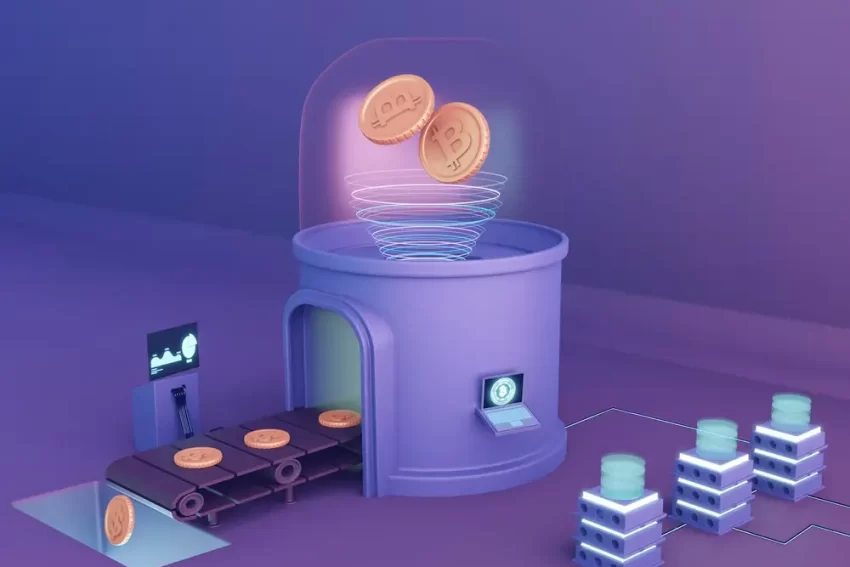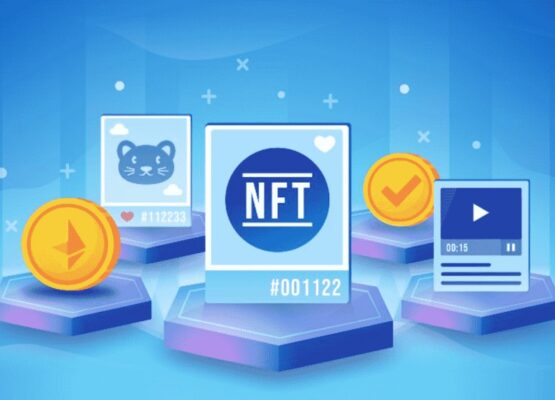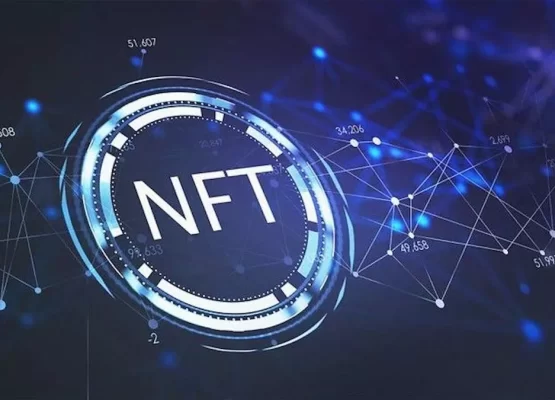Non-fungible tokens, or NFTs, have recently become popular in the crypto market. NFTs make tokenising various assets extremely simple, and it’s no surprise that their popularity is expanding by the day. However, NFTs do have a liquidity issue.
Because the rarity and uniqueness of NFTs automatically enhance their values, they are out of reach for most people. Even if you can purchase an NFT, there is no guarantee that anyone will be willing to purchase it from you at a greater price.
For example, reselling even the best NFTs hasn’t been as spectacular as the initial sale, owing to their high initial prices, which aren’t simple to pay for everyone, resulting in limited accessibility.
As a result, whole NFTs are becoming increasingly difficult to obtain, and many newcomers to the market are considering giving up on purchasing a rare collectable entirely.
However, emerging blockchain technology may already solve the liquidity problem: NFTs may now be split into smaller pieces and traded individually. How would this function in practice, and will it last long? Let’s explore this in detail.
What Are Fractional NFTs?
A fractional NFT is a full NFT divided into smaller fractions, allowing multiple people to claim ownership of the same NFT. The NFT is fractionalized through a smart contract that generates a certain number of tokens tied to the indivisible original.
These fractional tokens give each holder a percentage ownership stake in an NFT and may be bought or exchanged on secondary marketplaces.
How Does NFT Fractionalization Work?
NFTs have grown in prominence as a developing asset class. Some collections have grown so precious that possessing just one NFT has become prohibitively expensive. While not every NFT collection has achieved the fame of Beeple’s art or the cartoon ape avatars from Bored Ape Yacht Club, the ones worth collecting can still be fairly expensive. It also doesn’t help that NFTs are one-of-a-kind tokens, making them difficult to acquire on crypto marketplaces due to a lack of liquidity.
Also Read: How To Safely Store and Protect Your Cryptocurrency Assets
With such high entrance hurdles, fractionalization could be a viable solution. By breaking down an NFT into smaller pieces, this new market is democratized, allowing interested people with modest funds to invest reasonably.
This benefits investors and NFTs in general because it adds liquidity to the market. Fractional NFTs flood the market with many low-cost tokens that give a percentage stake in popular NFTs.
Buyers with limited means can essentially purchase fractional NFTs for a small percentage of the entire market value. This allows numerous investors to share ownership of the same asset.
The selling of an NFT of the classic “Doge” meme resulted in the developing of the meme cryptocurrency Dogecoin. In June 2021, an NFT of the meme sold for $4 million (currently worth several hundred million dollars). The purchaser, PleasrDAO, fractionalized the NFT 17 billion times, allowing everyone to hold a piece for pennies.
How Is An NFT Fractionalized?
NFTs are often created using the ERC-721 token standard, which is governed by the Ethereum blockchain, however, the ERC-1155 standard is also used occasionally. These two standards are now solely used to generate non-fungible tokens which another cannot replace.
The ERC-20 standard, on the other hand, is used to produce fungible tokens. Because they are interchangeable, each unit has the same value and usefulness. So, to fractionalize an NFT, a smart contract is utilized to generate many ERC-20 tokens that are tied to one indivisible ERC-721 NFT. Anyone who holds one of these ERC-20 tokens can now own a portion of the NFT.
The Fractional Ownership Market:
Asset fractional ownership is not a fresh concept. The notion has been applied successfully in various industries, from real estate to fashion, and for all types of physical assets, including stock, designer items, and luxury assets such as yachts and private planes.
In the real estate sector, fractionalization is widely employed by groups of people to purchase holiday houses at a low cost. Owners who purchase fractional ownership of a property receive a deed representing their part, instead of a timeshare, which merely promises a certain period of time at a property every year.
Fractional owners bear all of the rewards and risks associated with property ownership. The revenue, usage rights, and access to the shared property are split proportionally to the percentage of each co-owner’s asset. If the total value of the vacation house rises over a decade, the value of individual shares will rise as well. Of course, if the value of the property decreases, the value of the shares will also decline.
What Are The Benefits of Fractional NFTs?
Fractional NFTs, or non-fungible tokens, have various characteristics that appeal to both creators and collectors. Here are some of the benefits of fractional NFTs:
-
Increased Accessibility:
Individuals with modest financial means can now invest in high-value and rare digital assets thanks to fractional NFTs. The barrier to entry is greatly reduced by dividing an NFT into fractional shares, allowing more people to participate in the ownership and possible rewards.
-
Investment Diversification:
By fractionalizing NFTs, investors can diversify their portfolios by getting exposure to numerous assets. Rather than investing all of their funds in a single high-value NFT, investors can distribute them over fractional shares of multiple NFTs, decreasing the risk associated with a single asset.
-
Liquidity and Flexibility:
Fractional NFTs increase market liquidity by making it easier for investors to buy and sell fractional shares. Rather than waiting for an entire NFT to find a buyer, investors can exit their investment by selling a piece. This increases flexibility and makes managing and trading NFT holdings easier.
-
Shared Ownership:
Fractional NFTs allow collectors to co-own valuable digital goods, encouraging a feeling of community and shared interest. Multiple people can band together to collectively own and appreciate a rare NFT, opening up new social and collaborative possibilities in the NFT ecosystem.
-
Lower Entry Point for Creators:
Fractional NFTs allow creators to monetise their work while engaging with a larger audience. Creators can sell smaller sections of their NFTs by fractionalizing them, attracting purchasers who might not have been able to afford the complete asset. This broadens the potential market and raises the likelihood of revenue generation for artists and content creators.
-
Increased Market Liquidity:
Fractionalization can potentially increase overall liquidity in the NFT market. By dividing high-value NFTs into smaller shares, these assets become easier to trade, attracting more buyers and sellers. By encouraging an active and dynamic economy, this liquidity benefits both investors and artists.
-
Risk Reduction:
Owning a portion of an NFT minimizes the risk of owning the entire NFT. If the value of a certain NFT falls, the impact on investors is reduced because they only hold a portion of the asset. It offers risk diversification and protection against potential losses.
-
Fractional Governance:
Fractional NFTs can contain fractional governance models, allowing fractional shareholders to participate in NFT decision-making processes. This decentralized governance method can enable collective decision-making, ensuring that all stakeholders’ interests are represented.
What Are the Disadvantages of Fractional NFTs?
The drawbacks of fractional NFTs are numerous. These disadvantages include:
- The increased complexity and fragmentation introduced by fractionalization. Establishing trust and governance among multiple fractional owners can be difficult, resulting in slower decision-making processes and potential management issues.
- Another disadvantage is that the exclusivity and prestige associated with owning a complete, indivisible NFT diminish when divided into fractions, potentially reducing demand.
- Legal and regulatory issues also arise, as fractional ownership of NFTs may fall under existing securities and asset-backed securities regulations, creating compliance challenges.
- With multiple owners, the distribution of rights and royalties becomes complex, posing challenges for creators and potentially leading to disputes.
- Furthermore, the volatile nature of the NFT market, combined with the smaller trading volumes of fractional shares, raises the risk of price speculation and manipulation.
- Technical scalability issues and governance issues complicate the F-NFT landscape even more.
Overall, clear guidelines, robust governance mechanisms, and a regulatory framework addressing fractional NFTs are required to mitigate these disadvantages and ensure a more secure and efficient ecosystem.
Conclusion:
Fractional NFTs may be the next item to look out for as the NFT world becomes more accessible. And, with new and developing fractional NFT marketplaces such as Ommniverse bringing improved F-NFT accessibility and solutions for producers and collectors, now is the greatest time to dive into this ever-changing world of NFT.
Also Read: Best Practices For NFT Marketplace Platform Development
Go ahead and add that NFT collection you’ve been eyeing but didn’t want to commit to because of the exorbitant price to your portfolio. And if you’re a creator, now is your chance to shine by making your NFT more accessible in numerous fractions as its market value rises. Remember to DYOR before making a sale or purchase on a specific collection.




